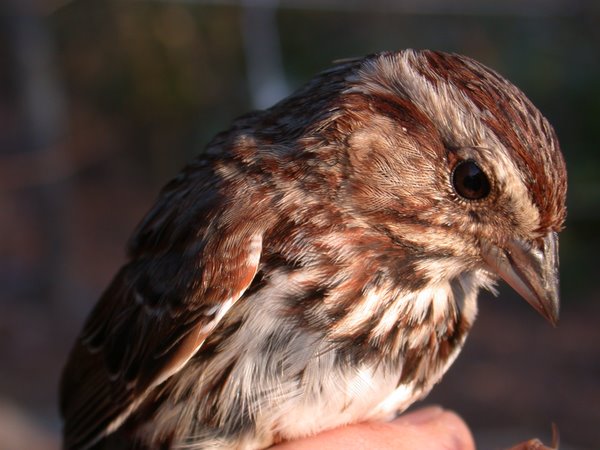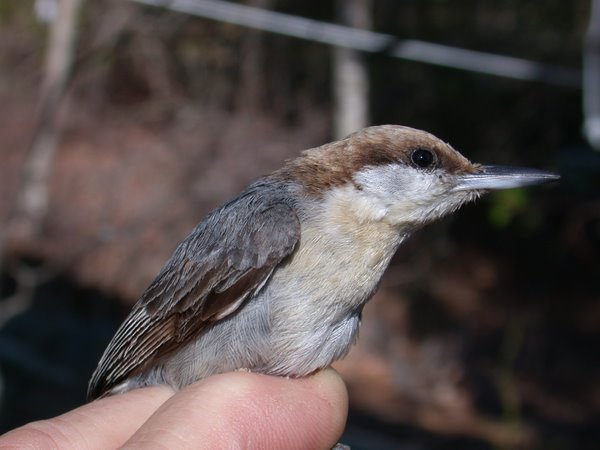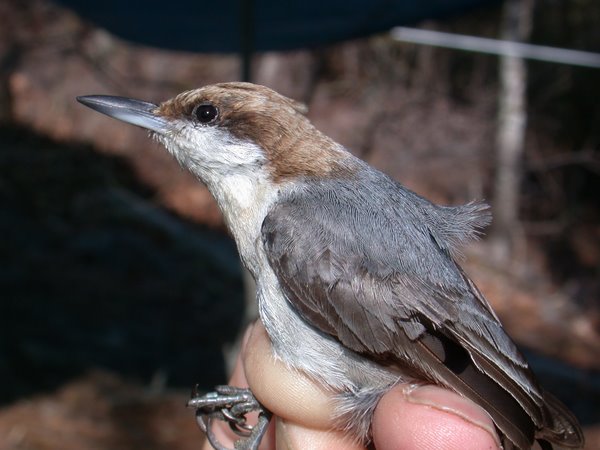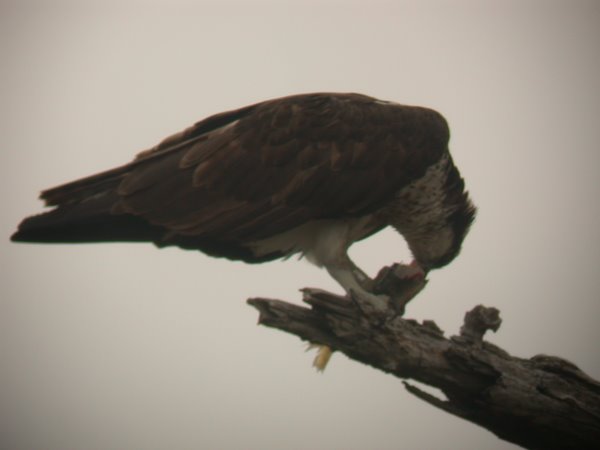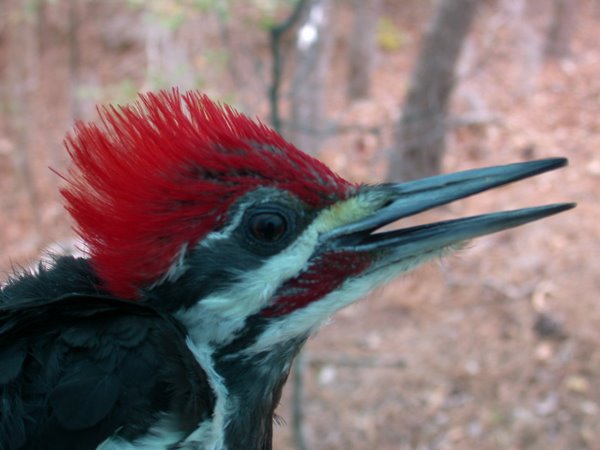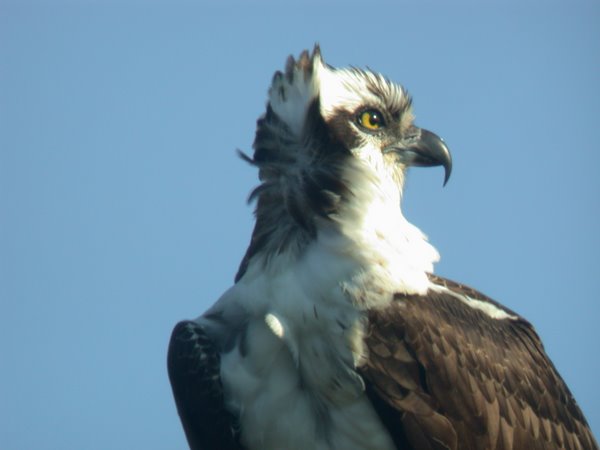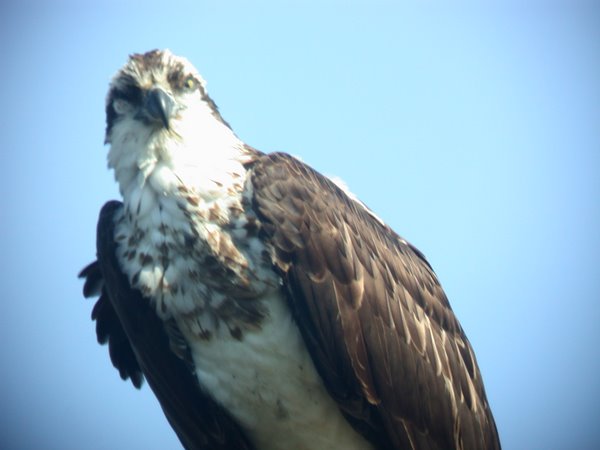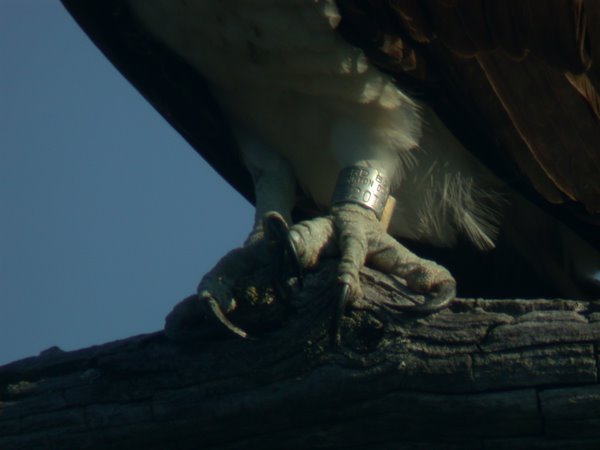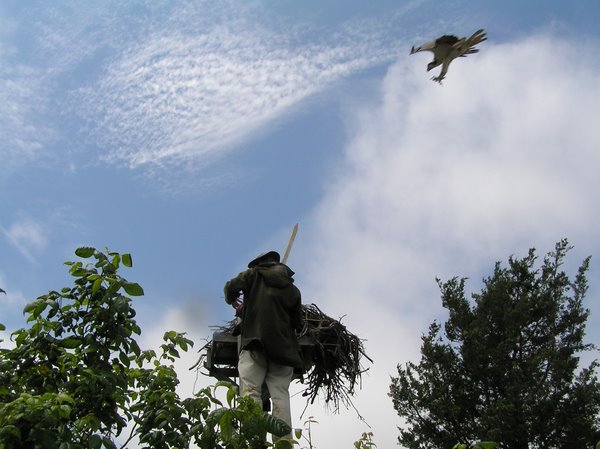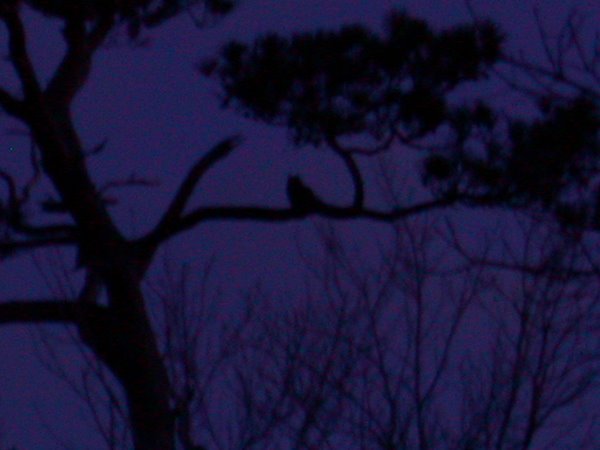


First, a few words about banding terminology. A bird which is caught in our nets and does not have an aluminum band on one of its legs is an
unbanded bird. Unless it is a hummingbird and as long as we are able to identify the species of the individual bird, we place a uniquely numbered band on the leg of the bird. Such a bird is known a a newly-banded bird or "new" bird. If this new bird is caught again during the same banding season at
FLSP, it is known as a "
retrapped" bird. If more than 24 hours has passed since it was banded or last captured, a notation of this
retrapping is made in our data records and some additional information is usually taken about the bird, such as its weight. If a
FLSP banded bird is again caught at First Landing during any subsequent spring season, it is known a local recapture or a "recap." [A bird banded elsewhere and caught at
FLSP at any time is known as a "foreign recapture." So far there have been only two such recaptures at
FLSP.]
The Northern
Parula is a small,
neo-tropical warbler which enjoys nesting in areas with Spanish moss (i.e. in
FLSPark) and, farther north, in areas with old man's beard lichen. (Must be comfy as they use the material in their nests.) The parula winters in Mexico, Central America and the
Caribbean, a few in south Florida. You may read about the Northern Parula, hear its song and see its range map at:
http://www.birds.cornell.edu/AllAboutBirds/BirdGuide/Northern_Parula.htmlDuring the initial 2005 spring, 26
parulas were banded at First Landing. During the second season 11 new were ringed, and last year there were 16 more. So far this spring only four new parulas have been banded. Remarkably, however, we have recaptured five FLSP parulas this spring! Indeed, the first two parulas caught this season were recaptures. (And there were parulas singing around the station for a week before the first was netted.)
Three of the birds were new in 2007-two females and one male. The fourth bird is a female from 2006 who was not recaptured in 2007. The fifth bird is a male from 2005 who was recaptured at FLSP in 2006 and 2007. Each individual was captured within a week of the date of its initial capture and was extracted from nets which are within yards of the nets in which the birds were first caught. (Think of the miles each bird has flown to return to FLSP.)
It would seem First Landing's Northern Parulas like and depend upon the park as much as the people who visit and enjoy the park! Thanks to CVWO.org President Brian Taber for the photo of the banded parula taken this past Saturday at the station. If you have the opportunity, come visit the station to hear and see a FLSP Northern Parula.






















